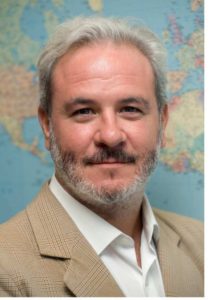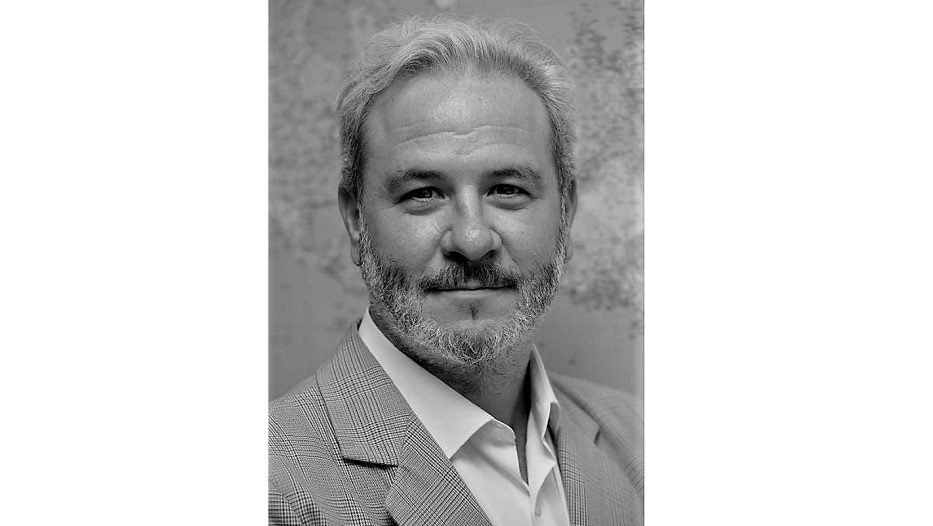admin | 13/11/2019
“It is strategic for risk managers to collaborate with other areas to bring stability to our organization.”
Climate change, new technologies, the globalization of sectors and the interconnectivity of the economy are creating a new global landscape of threats. As corporate risk manager for Ferrovial, one of the world’s leading infrastructure operators and city service managers, and president of the Spanish Associated Risk Managers Initiative (IGREA), Daniel San Millán explains how companies should face all these challenges in a coordinated and efficient way.
1. How can risk awareness be improved in large companies?
One aspect relevant to all organizations is to improve their risk culture. In this regard, there are two paths to go down. One would be to imbue this culture in the organization, showing the advantages of risk planning and control through figures such as insurance or internal alternative methods. The other path would be to collaborate with other areas of the company involved in the knowledge and control of risk, such as the Internal Auditing department or the Protection and Security areas, demonstrating the added value provided by Internal Risk Management.
2. Why is it essential for a large company to have a risk manager?
The life of companies is not only nourished by economic success and profits for their shareholders and society in general; also present are crises, natural disasters, market losses, claims by third parties and the shareholders themselves, or simply a fire in a strategic facility. Crisis situations are, therefore, present in the company’s normal operations, meaning that there must be a group of professionals whose main objective is to study and implement suitable methodology to counteract these situations from an economic and financial standpoint, providing their company with the necessary funds to go back to normality.
This can be achieved in different ways, and these methodologies are and should be the backbone of the risk manager who should implement, develop and foster them in their organization.
3. What are the main functions of risk managers?
Functions may vary from organization to organization, but there are some that are intrinsically non-delegable responsibilities, such as knowledge, control and the financing of risks. These tasks can be performed with more or less intensity depending on the financial resources available, the objectives taken on in the role of risk manager, and the very culture of the organization in question.
“Risk managers must implement suitable methodology to counteract crisis situations, providing companies with the necessary funds to go back to normality”.
4. What are the most important risks they are faced with?
In this field, I think that we have to be ambitious and not diminish our own goals. I would like to say that we should be present in all parts of the company where risks are spoken of.
For example, there is some push back to risk managers expressing an opinion on regulatory, market or financial risks. Thanks to their training and their own experience, many can bring ideas, experiences and initiatives to help other areas of the company, such as legal services, the financial department or new products. I think it is strategic that we can, at least, collaborate with other areas to achieve shared objectives, such as giving stability to our organization. This will require the collaboration of the insurance sector or the strengthening of captive companies capable of overcoming the dividing line between insurable and non-insurable risks, and the strengthening of so-called parametric risks through captive companies.
5. What is your relationship, as risk manager for Grupo Ferrovial, with agents in the insurance sector?
Our relationship with the market in general is “normal” and optimal from an operational standpoint. From an institutional standpoint, it is one of maximum collaboration and, therefore, of support and consideration. With regard to our role as a contracting party or insurance consumer, for my group of companies it is what it should be, no more and no less than that of collaboration and use of the products offered.
6. What do they want from insurance companies?
Our fundamental demand is to achieve a more efficient system in claim management and resolution. Insurance companies provide a lot of money to compensate their clients for the claims they suffer, but there is a certain feeling that there is little agility sometimes and, even at the risk of sounding demanding, I believe that you have to take a little more care of those processes and be sure that both parties are involved: the insured in everything that can be improved and the insurer if they consider it appropriate to improve their processes.
“Suitable responses must be given to the critical risks that will affect businesses through new methods of risk financing.”
7. How do you view their work and participation in the business in the world’s various regions?
I perceive it as a challenge of enormous complexity. For risk managers, the internationalization of our companies has been a challenge in many aspects: different legislations, more or less sophisticated markets, service organizations with different skills, aggravated risks in many regions, and so on.
We must be prepared and work hard so that all the pieces fit together, and in this the insurers and brokers play a fundamental role. I just want to ask that the organizations providing services to us through centralized insurance programs work and tune up their organizations with interests of their customers in mind, making available not only insurance solutions, but also logistical, regulatory and program management.
8. Which Latin American countries are more developed in risk management?
All or almost all of them are leaders; the internationalization and globalization of business have made it easier. Each of them has its own specific characteristics; we must understand them and adapt to them.
9. How does global interconnectivity affect the empowerment of the risk manager figure?
It has a very important impact, since this interconnectivity offers many advantages and some disadvantages, but it is essential to work in real time and give answers that are operative and efficient. I can’t imagine working without the advantage of new technologies that have given rise to a new way of doing business.
10. What are the major future challenges for risk managers?
This is a difficult question to answer, and it may be useful for other professions, but in making an effort to particularize it must be said that we should be able to respond to new global challenges, such as globalization itself, climate change, new technologies and, above all, to act appropriately and efficiently in the face of the critical risks that will affect our companies through new methods of financing risks in collaboration with the market. But these challenges are not unique to our profession; they affect many others. In this sense, I do not feel at all that I am responsible for the risks of a large company, but I would like to add that the insurance and financial markets in general must respond to new risks by providing solutions that can give us peace of mind and confidence.

Daniel San Millán del Río holds a degree in Law from the Universidad Complutense de Madrid, a master’s degree in Financial and Tax Law from the Centro de Estudios Tributarios and is an insurance mediator with a degree from the Dirección General de Seguros.
He has worked exclusively in the insurance sector. At Central Hispano Broker, he was responsible for the Claims Department and, following the merger with Grupo Santander, the executive of Key Accounts. Subsequently, he worked at Aon Corporate Business as Construction Accounts Director and Construction Director, until joining Grupo Ferrovial, where he has been a Corporate Risk Manager since 2004. Within this organization he has worked as a manager in reinsurance subsidiaries such as Alkes Reinsurance, Kryton RE, Anmey UK and Heathrow Airport Holding.
In the academic field, he has been a professor of Insurance Law, Insurance of Technical Branches (Construction and Engineering) and Civil Liability in the Company for Business Training (CFE), professor of Risk Management Practices for the Master of Insurance from the Fundación Mapfre and, from 2013 to the present, he has been a professor of Risk Management Practices in the Master of Insurance from ICEA.
At the associative level, he was vice president of Agers from 2007 to 2009, when he founded IGREA, an initiative of which he is currently president.





